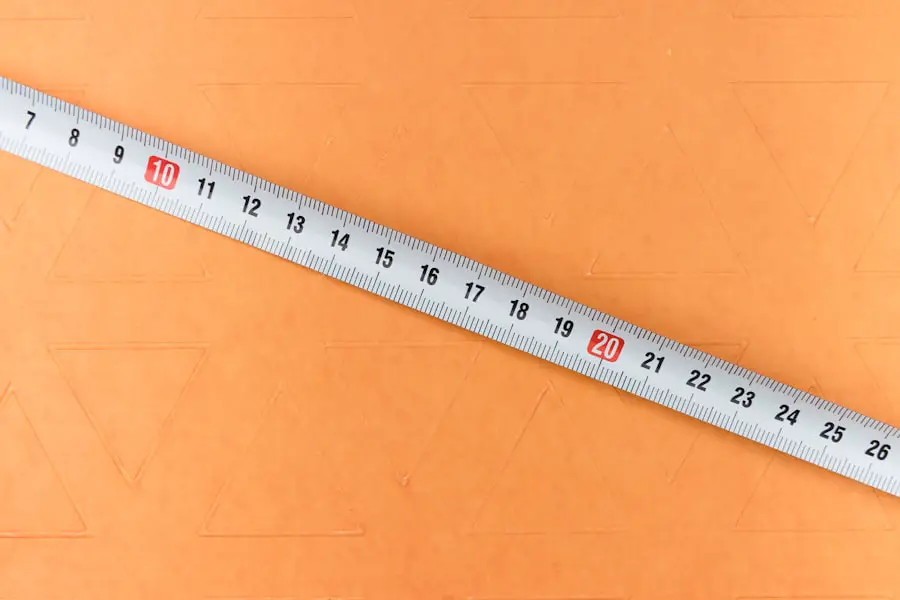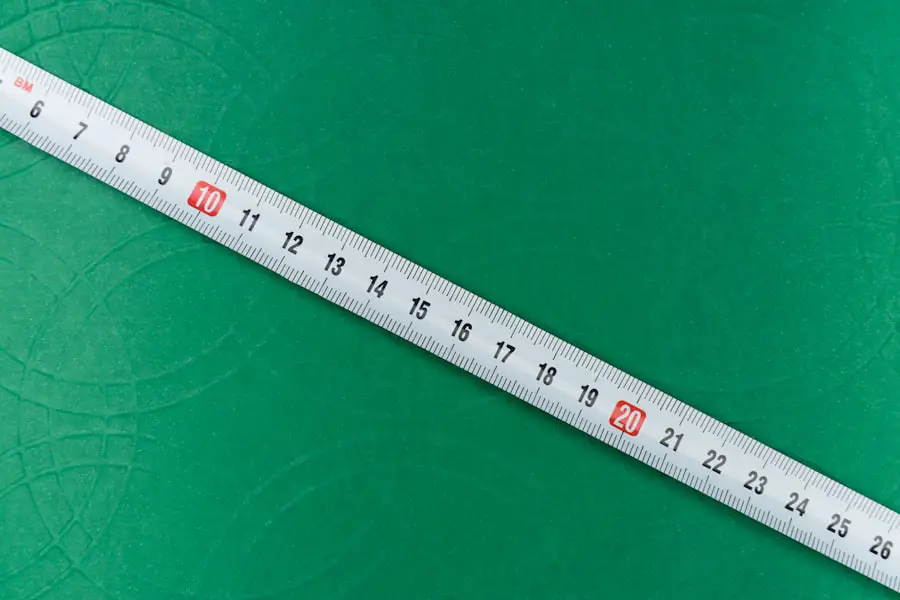Measuring your travel trailer is a fundamental task that often goes overlooked by many owners. Accurate measurements are crucial for a variety of reasons, including ensuring that your trailer fits within the confines of your parking space, complies with local regulations, and is suitable for your towing vehicle. When embarking on a road trip or planning to store your trailer, knowing its dimensions can save you from potential headaches.
For instance, if you plan to stay at a campground, many sites have specific size restrictions. Failing to measure your trailer could result in an unpleasant surprise upon arrival, where you might find that your trailer is too large for the designated space. Moreover, understanding the dimensions of your travel trailer can significantly impact your towing experience.
The weight and size of the trailer affect how it handles on the road, influencing factors such as fuel efficiency and stability. If you are unaware of your trailer’s length and weight, you may inadvertently exceed the towing capacity of your vehicle, leading to dangerous driving conditions. Additionally, accurate measurements are essential when considering upgrades or modifications to your trailer, such as adding awnings or storage solutions.
Without precise dimensions, you risk purchasing items that do not fit properly, leading to wasted time and money.
Key Takeaways
- Accurate measurements of your travel trailer are important for safety, legal compliance, and proper maintenance.
- Tools needed for measuring your travel trailer include a tape measure, level, and possibly a ladder or step stool.
- Follow a step-by-step guide to measure the length of your travel trailer, ensuring accuracy and precision.
- Don’t forget to measure the width and height of your travel trailer, as these dimensions are also important for safe travel and storage.
- Common mistakes to avoid when measuring your travel trailer include not accounting for protrusions and not measuring from the correct starting point.
Tools Needed for Measuring Your Travel Trailer
To effectively measure your travel trailer, you will need a few essential tools that will ensure accuracy and ease during the process. A reliable tape measure is the most critical tool in your arsenal. Opt for a tape measure that is at least 25 feet long, as this will provide ample length for measuring larger trailers.
A retractable tape measure with clear markings will help you take precise measurements without the risk of misreading the scale.
Additionally, a second person can be invaluable when measuring longer distances, as they can hold one end of the tape while you extend it to the other end. In addition to a tape measure, having a notepad or a digital device to record your measurements is essential.This will help you keep track of various dimensions without relying on memory alone. A level can also be beneficial when measuring height, ensuring that you are taking measurements from a flat surface. If you plan to measure the width of your trailer, a carpenter’s square can help ensure that you are measuring straight across rather than at an angle.
Finally, a calculator may come in handy if you need to perform any conversions or calculations related to weight distribution or towing capacity.
Step-by-Step Guide for Measuring the Length of Your Travel Trailer

Measuring the length of your travel trailer is a straightforward process, but it requires attention to detail to ensure accuracy. Begin by parking your trailer on a flat and level surface. This will provide a stable base for taking measurements and help avoid discrepancies caused by uneven ground.
Once parked, locate the front and rear points of your trailer. The length measurement should start from the very front of the trailer’s hitch to the very back of the trailer’s bumper or rear wall. Using your tape measure, extend it from the hitch to the rear of the trailer.
It is advisable to have someone assist you in holding one end of the tape measure at the hitch while you stretch it out to the back. This will help maintain accuracy and prevent any sagging or bending of the tape that could lead to incorrect readings. Once you have reached the back of the trailer, take note of the measurement and record it immediately to avoid confusion later on.
Repeat this process a couple of times to ensure consistency in your measurements; if there are discrepancies, take an average for accuracy.
Measuring the Width and Height of Your Travel Trailer
| Measurement | Width | Height |
|---|---|---|
| Exterior | 8 feet | 10 feet |
| Interior | 7.5 feet | 9 feet |
| Ground Clearance | N/A | 1 foot |
After determining the length of your travel trailer, the next step is measuring its width and height. To measure the width, start by identifying the widest point of your trailer. This is typically at the sides where slide-outs may extend or at the fenders if they are wider than the main body.
Position your tape measure at one side and extend it across to the opposite side, ensuring that it remains level and straight throughout the measurement process. For height measurement, begin by measuring from the ground up to the highest point of your trailer. This could be the roof or any accessories mounted on top, such as air conditioning units or antennas.
It’s crucial to take this measurement while standing on level ground to avoid inaccuracies caused by slopes or inclines. If possible, use a ladder or step stool to reach higher points safely without compromising stability. Record these measurements carefully, as they are essential for determining clearance requirements when navigating under bridges or entering low-clearance areas.
Common Mistakes to Avoid When Measuring Your Travel Trailer
When measuring your travel trailer, several common mistakes can lead to inaccurate results. One frequent error is failing to account for protruding elements such as awnings or accessories mounted on the exterior of the trailer. These features can add significant length or width that may not be immediately apparent if you only measure the main body of the trailer.
Always include these elements in your measurements to ensure compliance with regulations and safe towing practices. Another mistake is neglecting to double-check measurements after recording them. It’s easy to misread numbers or misplace decimal points when jotting down figures quickly.
To avoid this pitfall, take a moment after each measurement to verify its accuracy before moving on to another dimension. Additionally, using a tape measure that is worn or damaged can lead to inaccuracies; always inspect your tools before starting and replace them if necessary. Lastly, measuring on uneven ground can skew results; always ensure that your trailer is parked on a flat surface before taking any measurements.
Understanding the Legal Requirements for Trailer Length

Legal requirements regarding trailer length vary significantly depending on local laws and regulations. In many jurisdictions, there are specific maximum lengths for trailers that are allowed on public roads. For instance, in some states in the U.S., a standard travel trailer cannot exceed 40 feet in length without special permits.
Exceeding these limits can result in fines or penalties and may even require additional safety measures such as extra lighting or signage. It’s also important to consider how these regulations apply when towing multiple trailers or when using a fifth-wheel setup. Some states have different rules for combinations of vehicles and trailers, which can complicate matters further.
Before embarking on any journey with your travel trailer, it’s advisable to research local laws regarding trailer dimensions and ensure that you are compliant with all regulations in each area you plan to travel through.
Tips for Properly Maintaining and Storing Your Travel Trailer
Proper maintenance and storage of your travel trailer are essential for prolonging its lifespan and ensuring it remains in good condition for future adventures. Regular inspections should be part of your routine; check for signs of wear and tear on tires, brakes, and electrical systems before each trip. Additionally, cleaning both the interior and exterior regularly helps prevent mold growth and damage from dirt accumulation.
When it comes to storage, consider investing in a quality cover designed specifically for travel trailers. This will protect against UV rays, rain, and debris that can cause damage over time. If possible, store your trailer in a climate-controlled environment during off-seasons to prevent issues related to temperature fluctuations and humidity.
Furthermore, ensure that all windows and doors are securely closed before storing; this will help keep pests out and prevent water damage.
The Importance of Accurate Measurements for Your Travel Trailer
Accurate measurements are not just numbers; they represent safety, compliance with regulations, and peace of mind while traveling with your travel trailer. By understanding how to measure correctly and what tools are necessary for this task, owners can avoid common pitfalls that lead to complications down the road. Whether it’s ensuring that your trailer fits within designated spaces at campgrounds or confirming that it adheres to legal requirements for towing, precise measurements play an integral role in enhancing your overall experience as a travel trailer owner.
In addition to safety considerations, accurate measurements facilitate better planning for upgrades and modifications that can enhance comfort during trips. By knowing exactly how much space you have available inside and outside your trailer, you can make informed decisions about what features or accessories will work best for your needs. Ultimately, taking the time to measure accurately will pay dividends in terms of convenience and enjoyment during all your travels with your travel trailer.
If you’re planning a road trip with your travel trailer, it’s important to know how to accurately measure its length. This will ensure that you can safely navigate through various campsites and parking areas. For a detailed guide on how to measure the length of a travel trailer, check out this informative article on taketravelinfo.com. Understanding the dimensions of your trailer will help you plan your trip more efficiently and avoid any unexpected obstacles along the way.
FAQs
What is the standard way to measure the length of a travel trailer?
The standard way to measure the length of a travel trailer is from the very front of the trailer to the very back, including the hitch and bumper.
Why is it important to measure the length of a travel trailer?
Measuring the length of a travel trailer is important for several reasons, including determining if it will fit in a specific parking spot or campsite, ensuring it meets length restrictions on certain roads or bridges, and for general transportation and storage purposes.
What tools are needed to measure the length of a travel trailer?
To measure the length of a travel trailer, you will need a measuring tape or a measuring wheel. These tools will allow you to accurately measure the distance from the front to the back of the trailer.
Are there any special considerations when measuring the length of a travel trailer?
When measuring the length of a travel trailer, it’s important to account for any protrusions such as spare tires, bike racks, or rear-mounted accessories. These should be included in the overall measurement to ensure accuracy.
Can the length of a travel trailer affect towing and maneuverability?
Yes, the length of a travel trailer can affect towing and maneuverability. Longer trailers may require more skill and caution when towing and maneuvering, especially in tight spaces or on narrow roads. It’s important to consider the length of the trailer when planning your travel route and parking.
